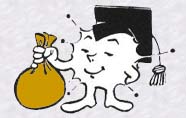THE CLASSIC ATOM 1
or
The king proton
or
The king proton
All forms of matter (solid, liquid, gas or living matter) are made up
of building blocks called atoms or sometimes elements (in
hommage to Empédocle of Vth
century before J.C.).
![]() How
many atoms are there?
How
many atoms are there?
In nature, about 90 different atoms exist which combine to form an infinite variety of compounds. It is necessary to add to this natural radioactive atoms (and therefore unstable) and those created artificially by man by nuclear reactions.
At the moment, about 115 atoms exist which have been discovered or created, but the list could grow. The last atom created is element 114, baptised with a provisional name of ununquadium (symbol Uuq): It was created in 1998 at the Nuclear Institute of Dubna in Russia.
![]() Late breaking news: Elements
116 and 118 have been synthesised in 1999 in California at the
Lawrence
Berkeley National Laboratory. Click here to know more (in English)!
Late breaking news: Elements
116 and 118 have been synthesised in 1999 in California at the
Lawrence
Berkeley National Laboratory. Click here to know more (in English)!
 The
most abundant atom in the Universe is also the simplest: hydrogen
(symbol H) which represents 75% of the total matter in the cosmos. Hydrogen
possesses a nucleus formed of 1 proton around which turns 1 electron.
The
most abundant atom in the Universe is also the simplest: hydrogen
(symbol H) which represents 75% of the total matter in the cosmos. Hydrogen
possesses a nucleus formed of 1 proton around which turns 1 electron.
![]()
 All atoms
are characterised by their Atomic Number represented by Z:
this is the number of protons in the atom.
All atoms
are characterised by their Atomic Number represented by Z:
this is the number of protons in the atom.
For example, for hydrogen Z = 1, for carbon Z = 6, for uranium Z =
92 etc...
For a neutral atom, the number of protons Z is equal to the number of electrons because the - charge of an electron cancels out the + charge of a proton.
Each element has a name and an international chemical symbol
of one or two letters (or three provisional letters for very recent elements).
Certain recently discovered atoms have been named in hommage to physicists
(such as Curium, Einsteinium, Mendélévium) or after countries
or regions (such as Polonium, Francium, Californium).
Thus it's the number of protons Z which defines an atom.
All these atoms or elements have been classified in the periodic
table created originally by the russian chemist Mendéleïev
in 1869:
Visit my interactive periodic table Click here:
(table modified from that created by X. Bataille on the excellent chemistry
site at http://chimie.scola.ac-paris.fr/
)
|
|
| http://ecole.le-village.com/okapi/fra4.htm In french. One of the best periodic tables on the Web. Essential viewing! |
| http://www.shef.ac.uk/~chem/web-elements/ In english. Very comprehensive. With audio pronounciation of the names of all of the elements! |